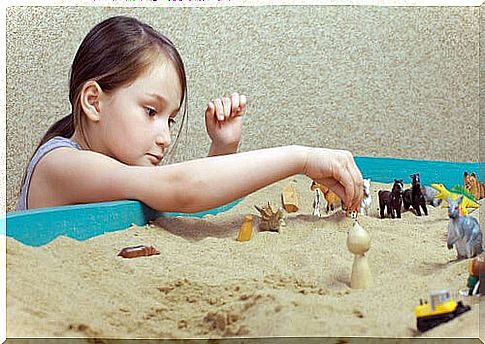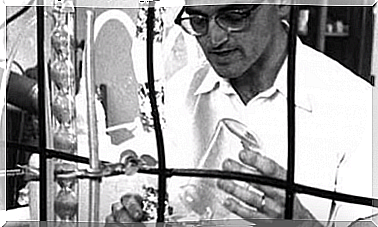The Sandbox Technique

Many times we go to the psychologist with an idea of what is happening to us or with the cause of our discomfort somewhat identified. Many others, it is difficult for us to find the problem, and the specialist must use various techniques to obtain and separate the important information. Among them is the sandbox technique, a method often applied in child psychology, since children, due to their level of development, often have difficulties expressing their feelings.
The sandbox technique, in its original name sandplay , was devised by the Swiss psychotherapist Dora M. Kalfflos based on the analytical psychology of Carl Gustav Jung and the work of the child psychiatrist Margarita Lowenfeld. It is mainly used to access information that the patient has not consciously noticed.
What is the litter box technique?
To access these non-conscious contents, a box with a blue bottom (there are wooden or plastic ones) filled with sand is used, in which the patient, in silence, places different figures. These represent elements or characters, real or fantastic, that the patient must place silently and according to their own preferences. Among these figures we can find people, animals and plants, buildings, means of transport, signs or natural dividers (rocks, wood), fantastic elements, movie characters, accessories …

During the process , the therapist should limit himself to offering an auxiliary help, leaving the interpretation of what has happened until after he has listened to the patient / client. On the other hand, it is common for the psychologist to subsequently take a photograph of the scene, for its subsequent interpretation, outside the context of the consultation.
The results are mixed, and there are a multitude of possible interpretations for a litter box. For example, if we find characters alone in the box, this may denote loneliness or feelings of abandonment on the part of the patient. On the other hand, if violence predominates in the scene, that can mean a certain feeling of desolation.
With which patients to use this technique?
Despite being used primarily in child psychology, the litter box technique can be applied at any age. It is very useful when we are talking about people who have difficulty talking about their emotions. This technique is related precisely to patients who have suffered, for example, some type of trauma (abuse, mistreatment …). They are also useful with people who are grieving or have emotional or behavioral disorders.
The children have just started their emotional life. They are in full development of complex emotions, and often they are not able to express what happens to them. That is why they are the most frequent patients and this technique is used in school contexts for the evaluation of disorders related to language, self-esteem, interpersonal relationships, bullying or family problems.
How useful is the litter box technique?
The litter box brings back an important element in our children’s mental development: play. This creative play that occurs in the sand explores the ancient archetypal patterns that are part of the patient. It is the very action of the game in the arena – the visualization, the personal choice, and the way the miniatures are placed in the arena – that activates that inner archetypal dimension.

Through the photographs that the therapist takes of the result of the box, various mental patterns can be analyzed in the patient’s unconsciousness. It is an interesting technique because it moves away from the linguistic plane. On many occasions, the patient is not able to verbalize what is happening to him, especially when we are talking about children. Thus, despite the impossibility of verbalization, the psychologist can have a sample of the problem.
These kinds of techniques are extremely useful, since they create a stress-free space in the office, where the patient feels comfortable. Likewise, creative play helps to release tension and creates in the consultation a place of respect and freedom for the patient / client to express themselves.









